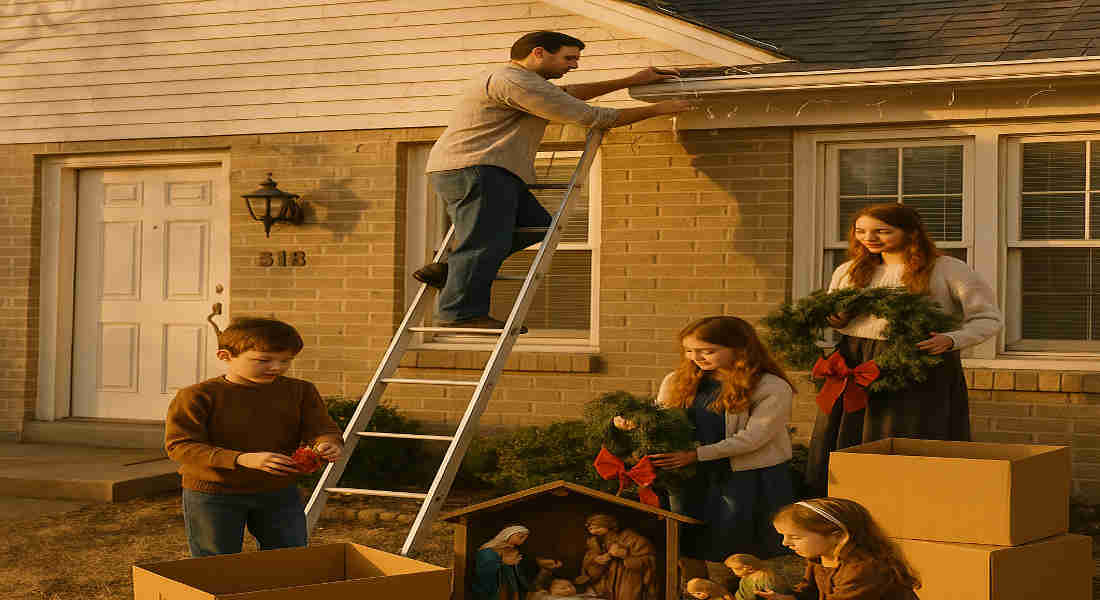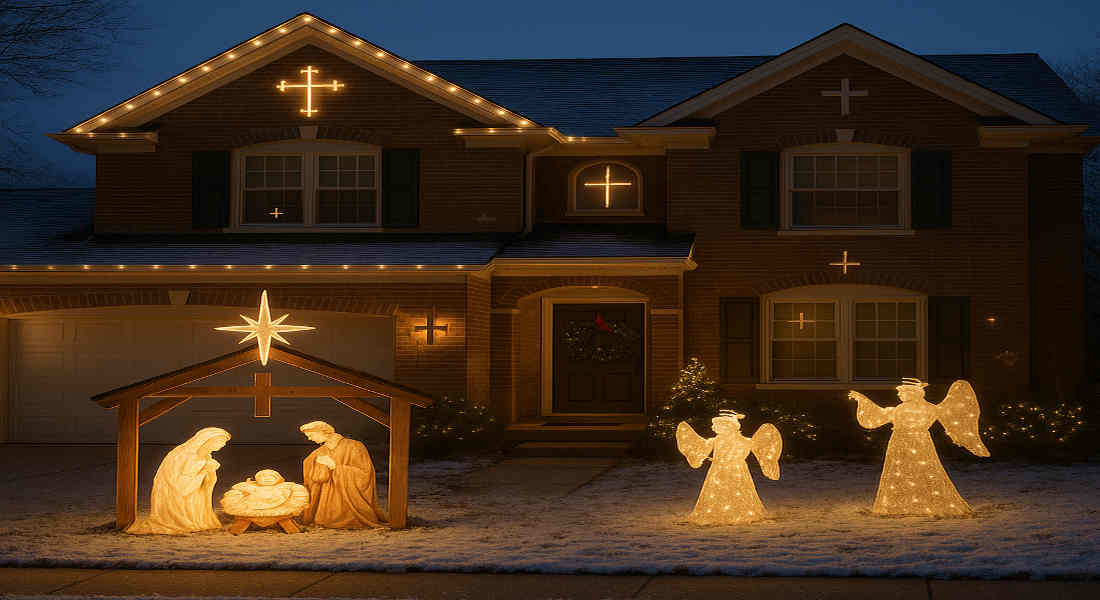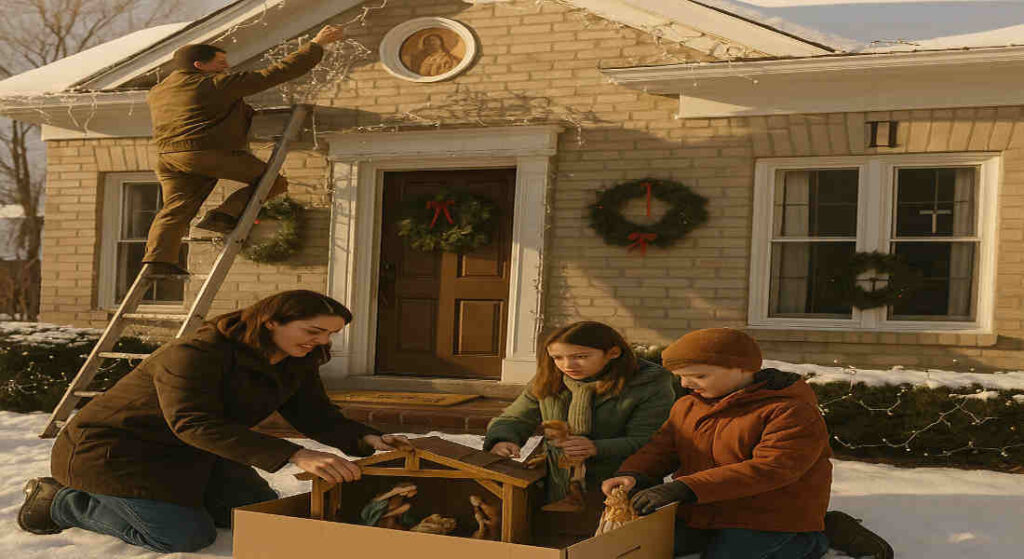Catholics traditionally observe the Christmas season as more than just the day of Christmas itself, extending the celebration through a liturgical period marked by significant feasts and observances. The timing for removing Christmas decorations varies but is generally aligned with the Church’s liturgical calendar. Many Catholics take down decorations on 7 January, the day after Epiphany, which concludes the 12 days of Christmas and commemorates the visit of the Three Wise Men to Jesus. However, the liturgical Christmas season officially ends with the Feast of the Baptism of the Lord, celebrated on the Sunday following Epiphany, often in early to mid-January. Some traditions extend the season even further to 2 February, the Feast of the Presentation of the Lord (Candlemas), which is 40 days after Christmas. While there are no strict rules, it is recommended to keep decorations up at least through the liturgical Christmas season to fully embrace the spiritual significance of the celebration in the home, which is considered a domestic church.
The Catholic Tradition of Keeping Christmas Decorations Up Until February
In Catholic tradition, the Christmas season extends beyond 25 December. It officially lasts until 2 February, known as Candlemas or the Feast of the Presentation of Jesus at the Temple. This rich history influences how many Catholics approach their holiday decorations.
During this time, homes remain adorned with festive decor to celebrate Christ’s birth and its significance within the faith. The twelve days of Christmas culminate in Epiphany on 6 January, marking a pivotal moment when the Magi visited Jesus.
Keeping decorations up until February is seen not only as a celebration but also as a way to reflect on themes such as light and hope during the winter months. Many families enjoy gathering around these decorative reminders of joy while engaging in prayer and community activities throughout this extended period.
This practice underscores a profound connection between physical symbols and spiritual meaning that resonates within Catholic communities worldwide.
The Debate: When is the Appropriate Time to Take Down Christmas Decorations?
The timing of taking down Christmas decorations sparks lively discussions among Catholics every year. For many, the Feast of Epiphany on January 6 marks a natural end to the holiday season. This day commemorates the revelation of Christ to the Gentiles and is often seen as a fitting moment to transition back to ordinary life.
Others argue that leaving decorations up until Candlemas on 2 February honors the full liturgical calendar. This perspective holds deep significance, celebrating Jesus’ presentation at the temple while extending festive cheer through the chill of winter.
Some families find joy in keeping their displays longer, embracing the spirit of goodwill well into February. Each home showcases its unique relationship with tradition and faith.
Personal preference plays a huge role in this debate. The choice reflects individual beliefs and customs within each Catholic household.
You may also read (how to style a sofa bed in your home).
Reasons for Taking Down Decorations Early
Some families feel that the spirit of Christmas fades once the New Year arrives. The hustle and bustle can make it easy to want a fresh start.
For many, taking down decorations early creates a sense of relief. It clears away clutter, making room for new beginnings in January. This allows individuals to focus on other goals or projects without distractions.
Early removal helps protect those cherished items for future seasons.
Some see this as an opportunity to reconnect with everyday life. Once the celebrations have passed, it’s time to return to routine and put Christmas behind you until next year.
Reasons for Keeping Decorations Up Until February
This day marks a significant moment in the liturgical calendar, signifying that Christmas festivities are not yet over.
Furthermore, displaying decorations can help maintain a sense of joy during winter’s cold and dark days of winter. The twinkling lights and festive ornaments serve as reminders of hope and warmth when sunlight is scarce.
These traditions foster connection among loved ones, allowing them to gather around decorated spaces for shared memories long after Christmas Day has passed.
The beauty of this practice lies in its significance; each ornament can tell a story or evoke cherished moments from years past. Keeping decorations up allows those stories to live on a little longer.
You may also read (how to decorate your home for an argentine christmas).
How to Decide When to Take Down Your Christmas Decorations
Deciding when to take down your Christmas decorations can be a personal journey. Consider the significance of each ornament and light you’ve hung.
Reflect on how long they have brought joy to your home. Is there still a spark of holiday spirit, or has it faded?
Think about family traditions, too. Do you have a set date? Some families gather for an Epiphany celebration, which falls on 6 January and marks the end of the Christmas season.
If you’re feeling overwhelmed by clutter, that might signal it’s time to pack things away. However, if you’re enjoying the coziness they bring during winter’s chill, let them linger a bit longer.
Trust your instincts and consult with loved ones as well. Their thoughts may provide clarity in making this decision together.
Alternative Ways to Celebrate the End of the Christmas Season
As the Christmas season draws to a close, there are many ways to celebrate while transitioning back to everyday life after the holiday cheer. One popular option is to host a small gathering with friends or family. This can be an excellent opportunity to share stories and reflect on the memories created during the festive season.
Consider incorporating some traditional Catholic practices, such as attending Mass on the Feast of the Presentation of Jesus at the Temple, also known as Candlemas, on February 2. This feast offers a beautiful way to honor the end of Christmas by lighting candles and symbolizing Christ as the light of the world.
If you’re feeling crafty, why not create homemade decorations for your home that align with other liturgical seasons? For example, transforming your space with symbols related to Lent or Easter can help bridge the gap between the two celebrations.
Engaging in acts of service allows you to extend that holiday warmth beyond just December and into every day throughout winter.
Consider hosting “Epiphany” parties that focus on celebrating when Christ was revealed to all nations—this can include sharing gifts and enjoying seasonal treats together one last time before packing everything away until next year.
With so many meaningful ways available, marking this transition doesn’t have to feel like an end but rather a new beginning filled with opportunities for connection and reflection.
You may also read (how to create stunning christmas home carol decor).
